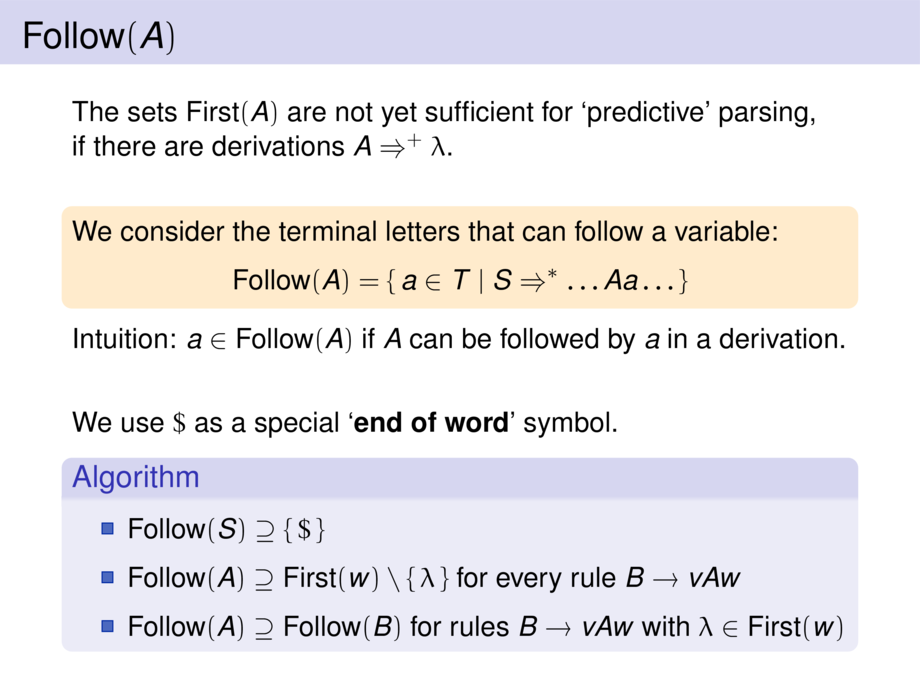



































































































70/136
\begin{frame}{$\follow{A}$}
The sets $\first{A}$ are not yet sufficient for `predictive' parsing,\\
if there are derivations $A \Rightarrow^+ \lambda$.
\pause\bigskip
\begin{goal}{}
We consider the terminal letters that can follow a variable:
\begin{talign}
\follow{A} = \{\, a \in T \mid S \Rightarrow^* \ldots A a \ldots \,\}
\end{talign}
%\cup
%\{ \lambda \mid S \Rightarrow^* u A \} $
\end{goal}
Intuition: $a \in \follow{A}$ if $A$ can be followed by $a$ in a derivation.
\pause\medskip
We use $\$$ as a special `\emph{end of word}' symbol.
\begin{block}{Algorithm}
\begin{itemize}
\pause
\item $\follow{S} \supseteq \{\,\$\,\}$
\pause
\item $\follow{A} \supseteq \first{w} \setminus \{\,\lambda\,\}$ for every rule $B \rightarrow v A w$
\pause
\item $\follow{A} \supseteq \follow{B}$ for rules $B \to v A w$ with $\lambda \in \first{w}$
\end{itemize}
\end{block}
\end{frame}

